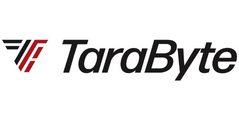
If you’re accustomed to working in a QuickBooks-only environment, discovering how Fishbowl handles units of measure (UOMs) can feel like a breath of fresh air. Fishbowl offers a world of options that QuickBooks does not!
With QuickBooks, the stocking UOM or base UOM must be the smallest UOM in which the part is used. This means that if you have a bill of material which calls for inches, you must use inches as the Stocking UOM.
In contrast, Fishbowl’s UOMs give you the flexibility to track your inventory in a way that reflects how you actually purchase, stock, use and sell it. Even if the bill of material calls for inches and you use the material in feet.
The 4 Fishbowl Units of Measure
There are four very different UOMs available in Fishbowl Inventory. Here’s what you need to know about each:
1) Stocking UOM
This UOM represents how the item is stocked in your warehouse. If you’re not sure what to use, simply answer the following question: If you asked the people in the warehouse to go out and count how many of these items are on hand, what unit of measure would they come back with? Would they be talking about cases, drums, boxes, units or what?
Don’t just transfer over your QuickBooks Stocking UOM, thereby needlessly perpetuating the limitations of QuickBooks’s UOM system in your Fishbowl installation. Take the time to scrutinize this UOM and ensure it reflects how each item is actually stocked. Getting the Stocking UOM correct when setting up your Fishbowl file is mission critical.
Note: there is one limitation here that you need to be aware of. If you are using Fishbowl’s e-Commerce plug-ins, the stocking UOM must be equal to the selling UOM on your site.
2) Selling UOM
The Selling UOM represents how your customers buy the item from you. Fishbowl provides tremendous flexibility in this area. You can have:
- One product that is sold in a variety of different UOMs, set up so that if you sell the item in multiple ways (such as selling coffee by the pound or by the ounce) you can simply select the UOM on the face of the sales order.
- Multiple products with different UOM’s all pointing at the same part. For example, I have customers that sell by the unit, by the box and by the Master Case. We can make each of these a product that is associated with the same part.
3) Vendor UOM
This is the unit of measure in which you buy the item. The exciting thing here is that you can have an unlimited number of vendors for the same part, and each of these vendors can have a different ordering UOM.
For example, you might be buying a particular type of wire in 25-foot rolls from one vendor, 50-foot rolls from a second vendor and 150-foot rolls from a third vendor. Fishbowl can keep track of all of this for the part—you just need to give Fishbowl the correct conversions.
4) Building UOM
This is the UOM that you use to measure what goes into your final product. This should reflect how you use that part in your Bill of Materials.
Getting back to the wire example, if four inches of wire are used to make each final product, the Building UOM could be inches. If the Stocking UOM is feet, having a Building UOM in inches spares you from converting those inches into fractions of feet.
Watch out for the “each” trap
Back in 2010 when Fishbowl Manufacturing was launched, the system reserved the “each” UOM for serialized parts, meaning those parts for which serial number tracking is turned on. Because serialized parts are always whole parts, Fishbowl does not allow anything with the “each” UOM to be fractionalized.
This means that when you use “each” in Fishbowl, that item can never be fractionalized or represented with a decimal, nor can any UOM that converts into it as the item moves from purchasing to stocking to building to selling. On top of this, once you create a conversion between “each” and another UOM, such as a “case of 6,” Fishbowl will never allow you to make the conversion inactive. You’ll be stuck with it forever, or until you start a new database, whichever comes first.
All of this is a problem for most manufacturers, and represents another reason why you should focus on getting your Fishbowl UOMs correct from the get go and not blindly accept the QuickBooks UOM.
Assuming you do think of your inventory in terms of each, the easy way around this is to use something else for the UOM instead of “each,” because all other UOMs in Fishbowl can be fractionalized. My personal favorites are “unit” and “piece.” Unless the part in question is a serialized part, avoid using “each” as a unit of measure.
The magic is in the math
Some of my clients deal with chemicals. They might buy in gallons, stock in barrels and consume the chemical in a weight with a specific gravity. Situations like this can be seamlessly tracked in Fishbowl…provided you get the conversion math right during the setup process. The magic is in the math.
 Need help with your Fishbowl Implementation?
Need help with your Fishbowl Implementation?
Not sure about the right way to do things in the Fishbowl/QuickBooks world?
Give us a call! As Fishbowl Inventory Super Heroes, we’re here for you.

.png)
